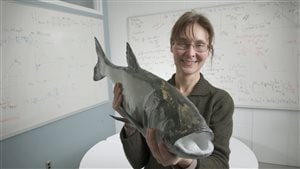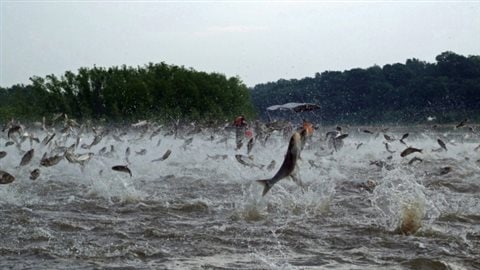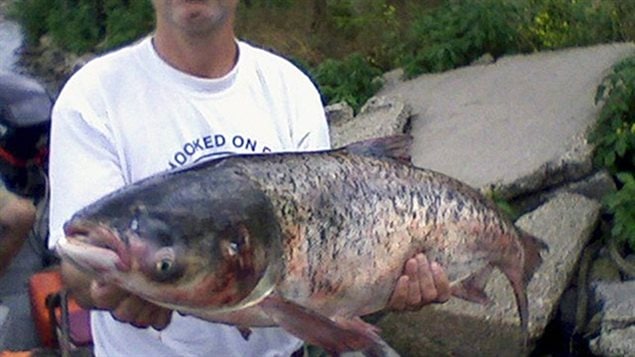There have been great concerns in recent years about the possibility of invasive Asian carp taking hold in the Great Lakes. A recent study showed that only a few need to escape into the lakes to potentially create a population.
But how would just a few fish find each other in order to mate in such huge lakes. They do it through “landmarking”
Kim Cuddington (PhD) a specialist in theoretical ecology, is an associate professor in the Department of Biology at the University of Waterloo in Ontario.
Listen
Professor Cuddington used a a branch of mathematics called combinatorics and a phenomenon in the animal world called “landmarking”.
Kim Cuddingham was the lead author of the study published this week in the Journal of Theoretical Ecology, called “Landmarking and Strong Allee Thresholds”
It seems that where there is not a dense population of a species, various species seek out specific ”landmarks” as places to congregate and find potential mates.
Professor Cuddington notes that several species do this, such as butterflies which seek out the highest tree in an area. As others seek out the same high landmark, the chance of finding a mate are much greater than randomly in the wide open country where the population may be thinly spread.
In the case of carp, they will seek specifically seek out warmer faster currents and follow them to the source and congregate there.
The study was inspired by concerns that a few carp might slip past barriers in Chicago and get into the Great Lakes. The question was, that if a few do make it, would they be able to find each other in the vast lakes, mate, and begin to populate and overcome and even eliminate domestic species.

From the study, it was shown that because of the ability to find each other through “landmarking”, only a few fish would likely be needed to create a strong risk of breeding. In fact the study showed that as few as ten fish making their way through the barrier pose a serious risk.
As Professor Cuddington says, in terms of the potential major negative affect on the lakes ecosystems, it’s very worrying. It is now up to authorities to determine how to act upon the information.







For reasons beyond our control, and for an undetermined period of time, our comment section is now closed. However, our social networks remain open to your contributions.